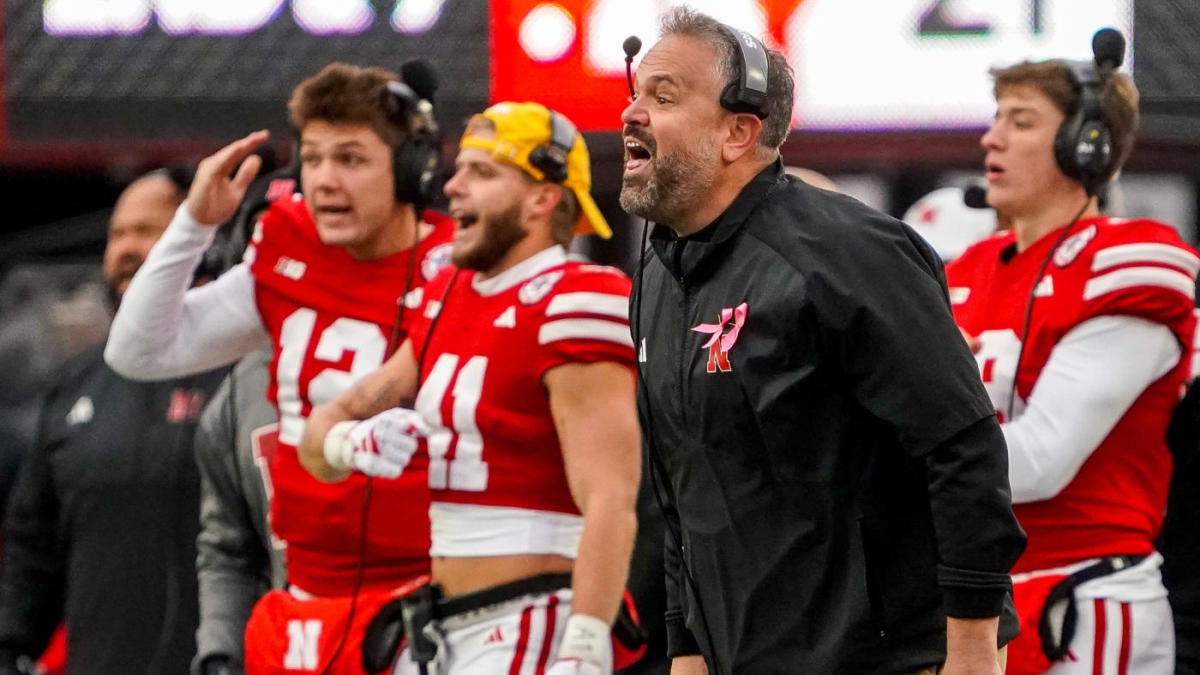
At some point this spring, billions of cicadas will emerge from the ground across the eastern half of the United States. Some will have been underground for 13 years, while others will have been waiting for 17 years. Regardless of the time each cicada spent in the cold, damp Earth, awaiting the moment to finally see the sun and be eaten by a bird, they will all ask the same question.
“What the hell happened to Nebraska football while I was down there?”
The last time Nebraska had to deal with cicadas was in 2007. The Cornhuskers went 5-7 and fired Bill Callahan for the audacity of missing a bowl game. It was the second time one of Callahan’s Nebraska teams had done so after the Cornhuskers went bowling every season from 1969 to 2003, with multiple national titles in between. In the 17 years since, Nebraska has been to nine bowl games, the last of which was in 2016.
It’s a program that’s been wandering aimlessly since leaving the Big 12 to join the Big Ten in 2011. Nebraska has time and again embarked on a new season with hopes of resolving its issues, only to be met with disappointment.
The biggest problem in solving Nebraska’s problems is knowing what the problem is. All sorts of things have gone wrong, whether on the field or off it. The Scott Frost tenure was an unmitigated disaster from start to finish, but one stat from Frost’s tenure has been cited repeatedly.
In Frost’s five seasons at Nebraska, the Cornhuskers struggled, going 7-25 in one-score games. The blame was squarely placed on the coaching staff. The reason Nebraska failed to win close games, or blew leads late, was a failure of leadership. The hope was that a new staff would rectify this. Enter Matt Rhule, who was seen as a promising program builder based on his previous work at Temple and Baylor, but had a disastrous run in the NFL with the Carolina Panthers.
The Huskers went 1-5 in one-score games under in 2023, Rhule’s first season, dropping their record to 8-30 in one-score games since 2018.
Of course, it’s important to note that a consistently poor performance over five years under Frost was a trend. The 1-5 record in one season under Rhule could prove an outlier. The question is, how does Nebraska go about fixing it? The answer isn’t simply to cross your fingers and hope more breaks go your way.
You make your own breaks, and if there’s anything Nebraska football has done consistently in recent years, it’s shooting itself in the foot. Here’s a laundry list of breaks the Huskers need to make.
1. Take care of the damn football
Since that fabled 2018 season, Nebraska has a turnover margin of -38. That ranks 130th of 133 FBS teams. While it’s a bit simplistic, one could make a convincing argument that the best way to avoid losing one-score games would be to stop giving the ball away so damn often. Maybe then you’d be up multiple scores!
What’s somewhat odd, though, is that while the Huskers have turned the ball over far too often, their points off turnover margin in that span of -37 isn’t good, but it’s better than you’d expect. It ranks 93rd nationally and suggests that the defense has done a pretty solid job bailing out the offense.
Last season the Huskers had a turnover margin of -17 (132nd) and a points off turnovers margin of -28 (109th). While those numbers are bad, they could’ve been much worse. It lost 15 fumbles, but fumbled 31 times. It fumbled on 4.19% of its offensive snaps. Both of those numbers were the worst in the nation.
I care far more about a team’s number of fumbles than its number of lost fumbles. Once the ball is on the ground, it’s a coin flip. The only way to take luck out of the equation is to never fumble the ball in the first place.
Jeff Sims began the season as Nebraska’s starting QB but was quickly replaced when he had problems holding on to the ball, fumbling six times (to go with six interceptions). He was replaced by Heinrich Haarberg, who fumbled 13 times. It was a serious problem that derailed plenty of Nebraska drives and played a huge role in why the Huskers offense finished 124th nationally in points per possession (1.45) and 126th nationally in possessions ending with points (24.3%).
As a team, Nebraska turned the ball over on 20.1% of its possessions last season. Not only was that the highest rate in the country, but the next highest was Georgia Southern at 18.3%. The national average was 10.8%.
2. The forward pass exists, so use it
Nebraska has never been a haven for the pocket-passer prototype. The best QBs in program history, like Tommie Frazier and Eric Crouch, won Heismans thanks to their prowess as rushers in option offenses. The hope at Nebraska is that Dylan Raiola will change that.
Raiola is a five-star freshman carrying the hopes of a large fanbase on his shoulders. While it’s a lot to ask a freshman to carry the load like that, if Raiola can provide a glimmer of a passing attack in 2024, it’d go a long way toward ending the bowl drought.
The Big Ten had no shortage of bad passing attacks last season, but while Iowa’s offense, which was a raging dumpster fire, grabbed most of the attention, it’s not as if the Huskers were tearing it up.
|
1. Michigan |
165.8 |
0.38 |
8.9 |
6.6% |
1.4% |
5.2% |
30.5% |
|
2. Ohio State |
155.2 |
0.31 |
8.7 |
6.5% |
1.8% |
5.4% |
26.2% |
|
3. Maryland |
141.4 |
0.11 |
7.6 |
5.7% |
2.7% |
5.7% |
28.6% |
|
4. Penn State |
139.4 |
0.22 |
6.8 |
7.3% |
0.5% |
3.7% |
29.5% |
|
5. Illinois |
139.2 |
0.09 |
7.7 |
5.5% |
3.1% |
8.8% |
35.5% |
|
6. Northwestern |
131.5 |
0.05 |
6.8 |
5.1% |
2.1% |
11.6% |
39.9% |
|
7. Indiana |
127.8 |
0.08 |
7.0 |
4.9% |
2.7% |
6.4% |
34.5% |
|
8. Purdue |
121.5 |
0.01 |
6.5 |
3.8% |
2.6% |
5.8% |
37.4% |
|
9. Wisconsin |
118.9 |
0.01 |
6.1 |
3.0% |
1.1% |
4.7% |
25.2% |
|
10. Michigan State |
116.8 |
-0.08 |
6.3 |
3.7% |
3.4% |
6.2% |
31.5% |
|
11. Minnesota |
112.6 |
-0.04 |
6.0 |
5.1% |
3.5% |
6.3% |
32.8% |
|
12. Rutgers |
105.2 |
-0.09 |
6.1 |
3.4% |
2.7% |
4.5% |
26.0% |
|
13. Nebraska |
105.0 |
-0.09 |
6.2 |
3.8% |
6.1% |
10.3% |
40.4% |
|
14. Iowa |
91.2 |
-0.27 |
4.8 |
2.6% |
3.2% |
8.4% |
38.2% |
Those sack rate and pressure rate numbers stand out, but they aren’t necessarily damning statements about the offensive line. What my eyes tell me when watching Nebraska’s offense is that the responsibility falls more on Sims and Haarberg. Not only did both tend to hold onto the ball for too long, but they were constantly on the move. Blocking defenders without being able to grab and tackle them is a difficult job. It becomes far more difficult when you can never be sure where the QB you’re assigned to protect is at any given moment.
Imagine being a member of the Secret Service, but you don’t know where the President is.
It will be easier to know where Raiola is. While he’s a good athlete for somebody his size, Raiola prefers to do his damage from the pocket. While he’ll no doubt take his lumps in processing and getting the ball out on time as a freshman, his presence alone should alleviate those sack numbers.
Raiola is also much better equipped to push the ball vertically in the passing game. That threat hasn’t been there much in recent years, so opposing defenses haven’t had to respect it and could worry about defending a smaller portion of the field. Force defenses to keep safeties back, and everything opens up, whether that’s underneath routes or room in the running game. All of which should lead to a more efficient and effective Nebraska offense.
3. Make some field goals
Special teams are always overlooked but can make a big difference in close games. While turnovers and QB play are the biggest culprits in Nebraska’s struggle to win one-score games, making a damn field goal once in a while wouldn’t hurt.
Since 2018, Nebraska kickers have converted 67% of their field-goal attempts. That number ranks 120th nationally. The success rate drops to 44% on attempts over 40 yards, which ranks 124th.
Not every drive will end with a touchdown, but if you hold onto the ball, get into field-goal range, and actually make the field goal, it helps a lot!
4. Keep the defensive momentum
The one thing Nebraska has gotten correct lately is its defense. The Huskers were a very good defense last season, ranking in the top 20 and top 10 of some of the metrics that matter the most.
|
National Rank |
17th |
9th |
5th |
28th |
23rd |
94th |
There are areas the unit can improve upon. Ideally, it would be more disruptive and force more turnovers (it ranked 94th in defensive turnover rate last year, the one true weak spot), but overall, this unit did its job. Maintaining the overall level while improving around the margins could help get this team back to a bowl game. Combine it with significant improvement in the areas outlined above, and Nebraska could emerge as one of the better teams in the Big Ten this season.
Too bad the cicadas won’t be around long enough to see it.

Must See
-


Football
/ 1 week agoWhite Team Triumphs in Spirited Nebraska Spring Game
Lincoln, NE – In a closely contested Nebraska Spring Game, the White team edged...
-
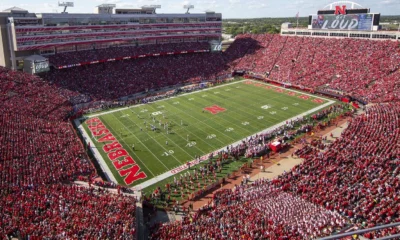

Featured
/ 2 weeks agoFan Guide to the Red-White Spring Game
Nebraska fans are set for a thrilling Saturday at Memorial Stadium for the annual...
-
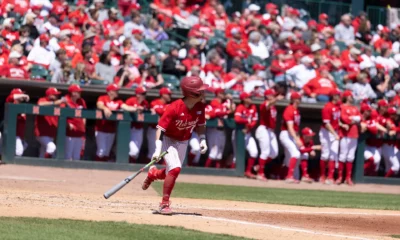

Baseball
/ 2 weeks agoHuskers Command Series Victory with a Resounding Win
In a spectacular show of force, Nebraska equaled its highest run tally of the...
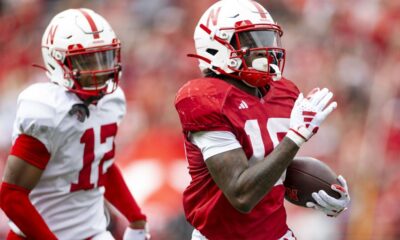

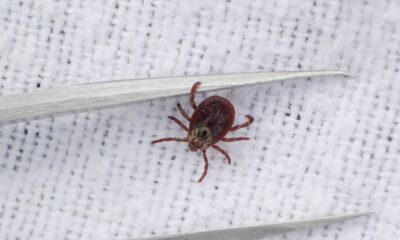

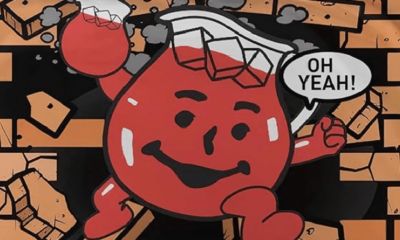



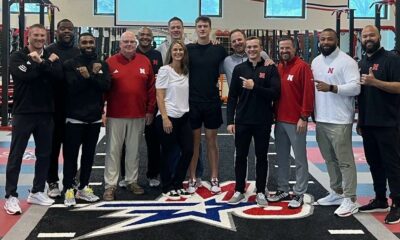

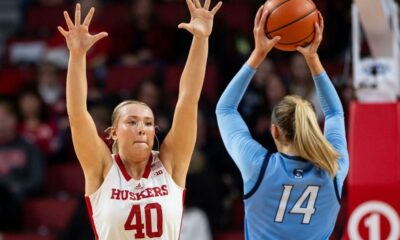

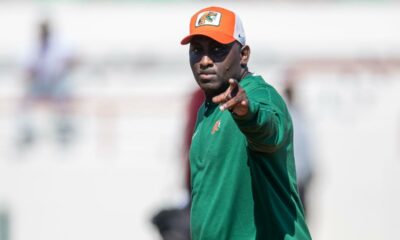

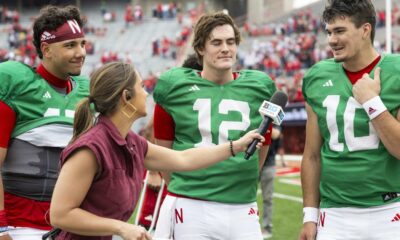





You must be logged in to post a comment Login